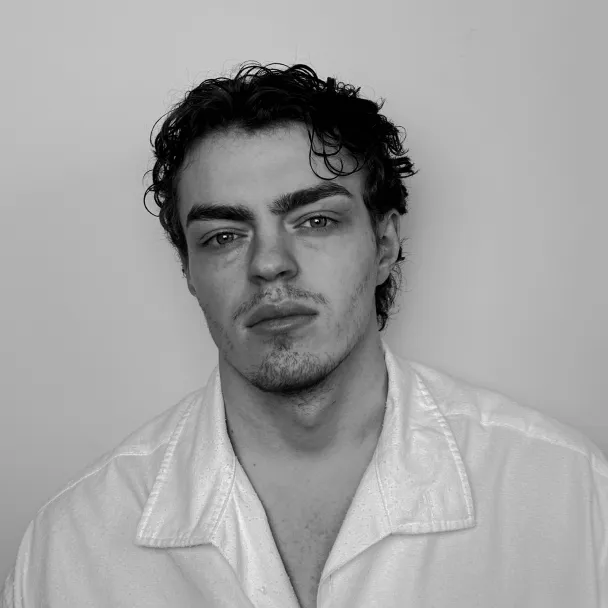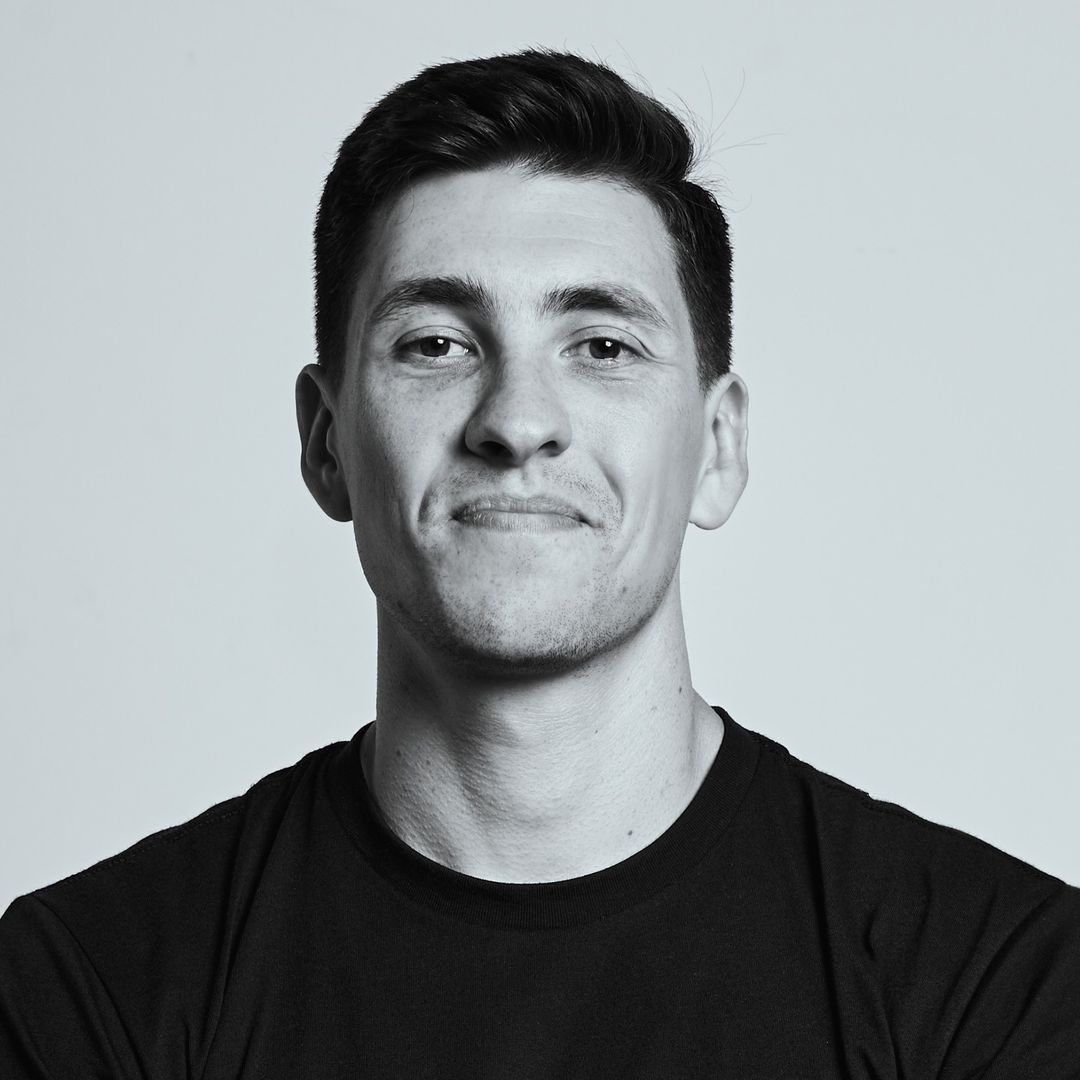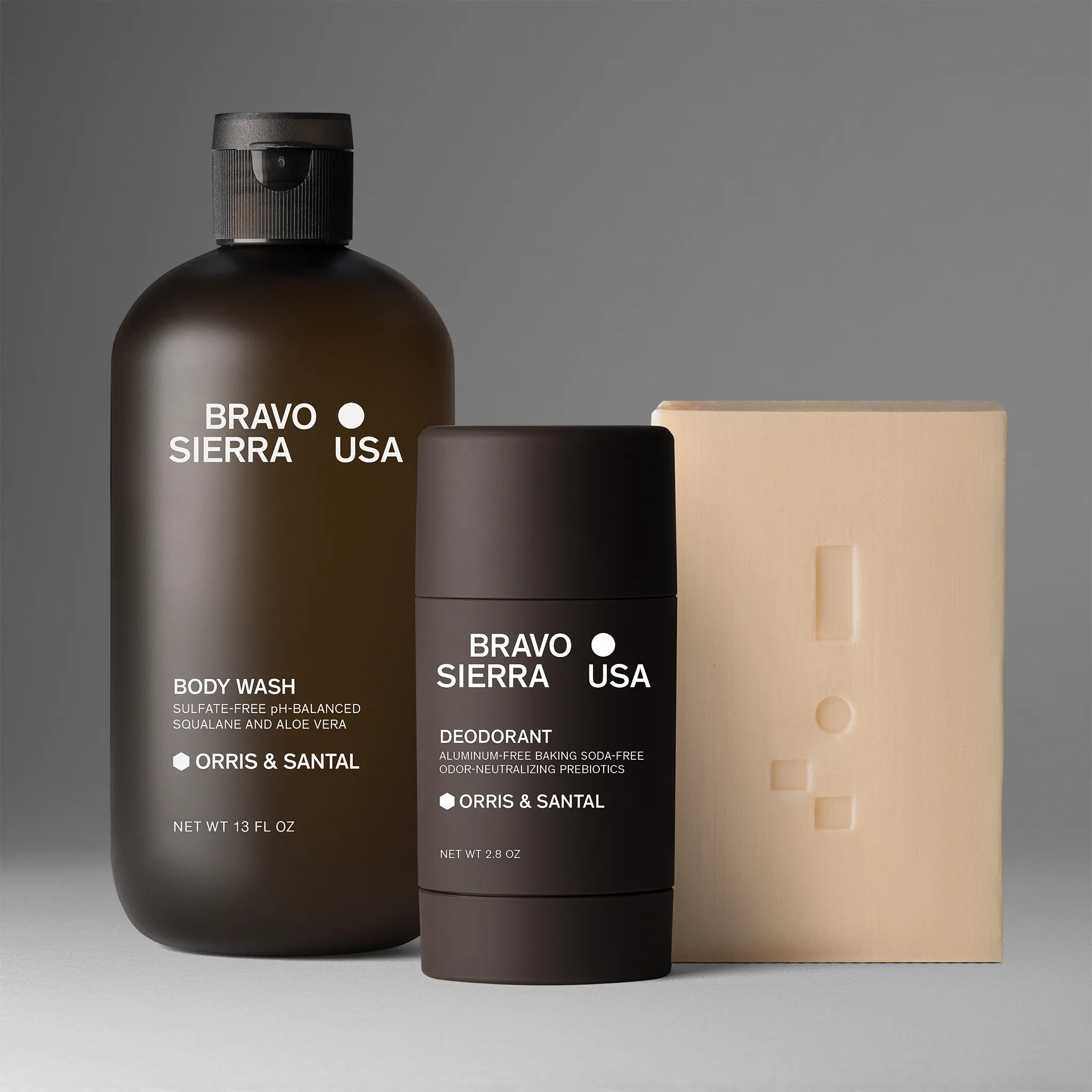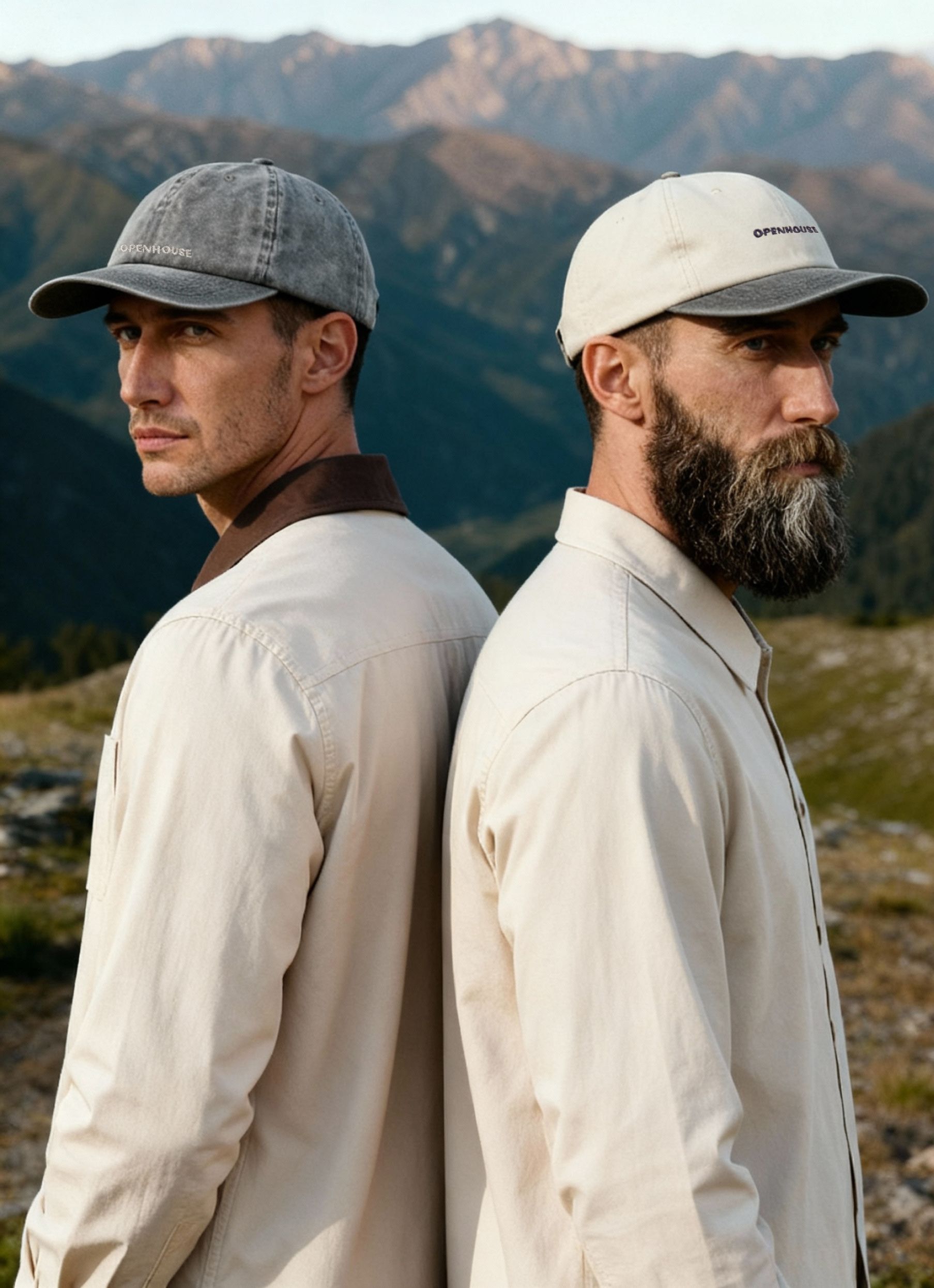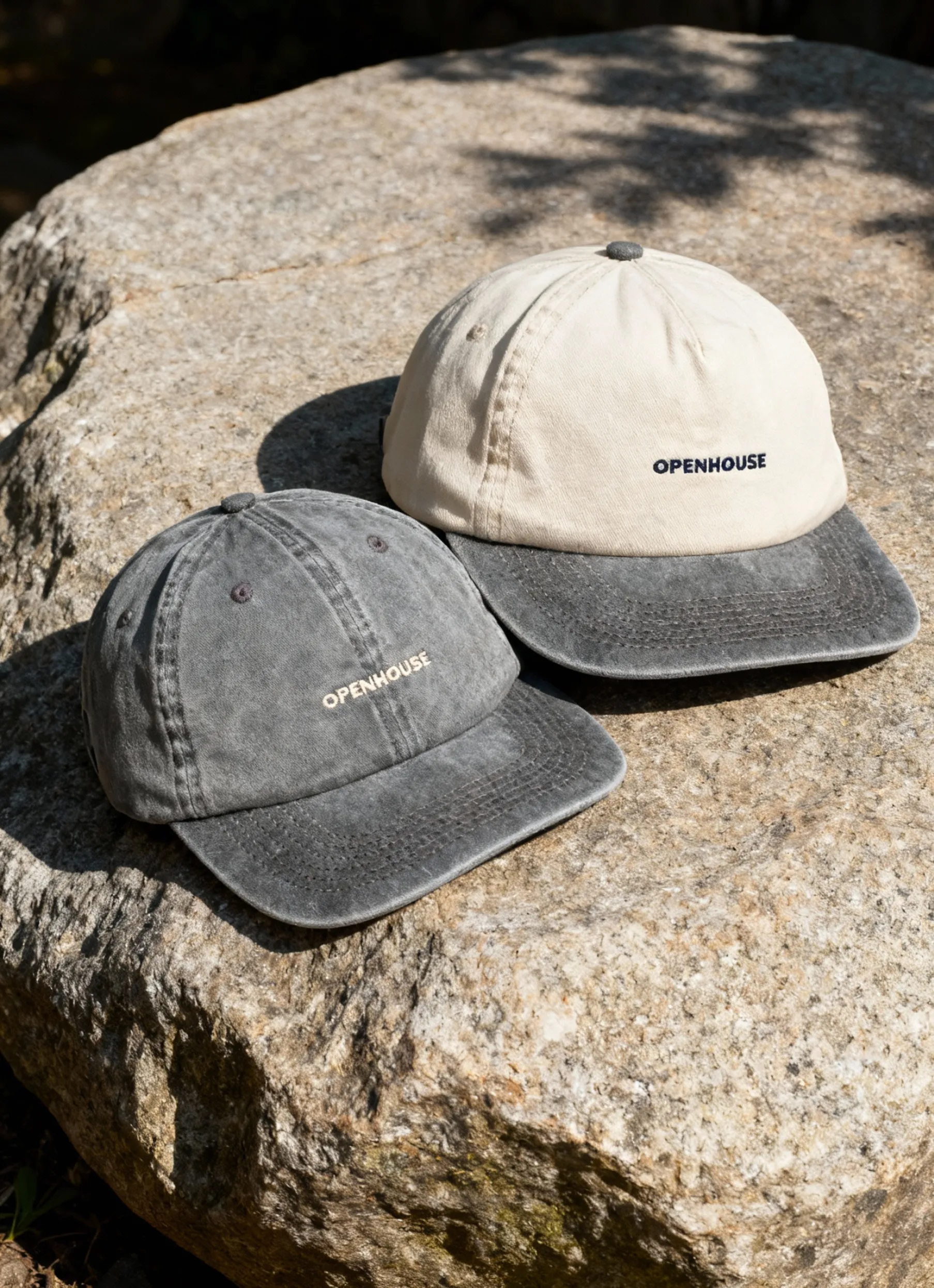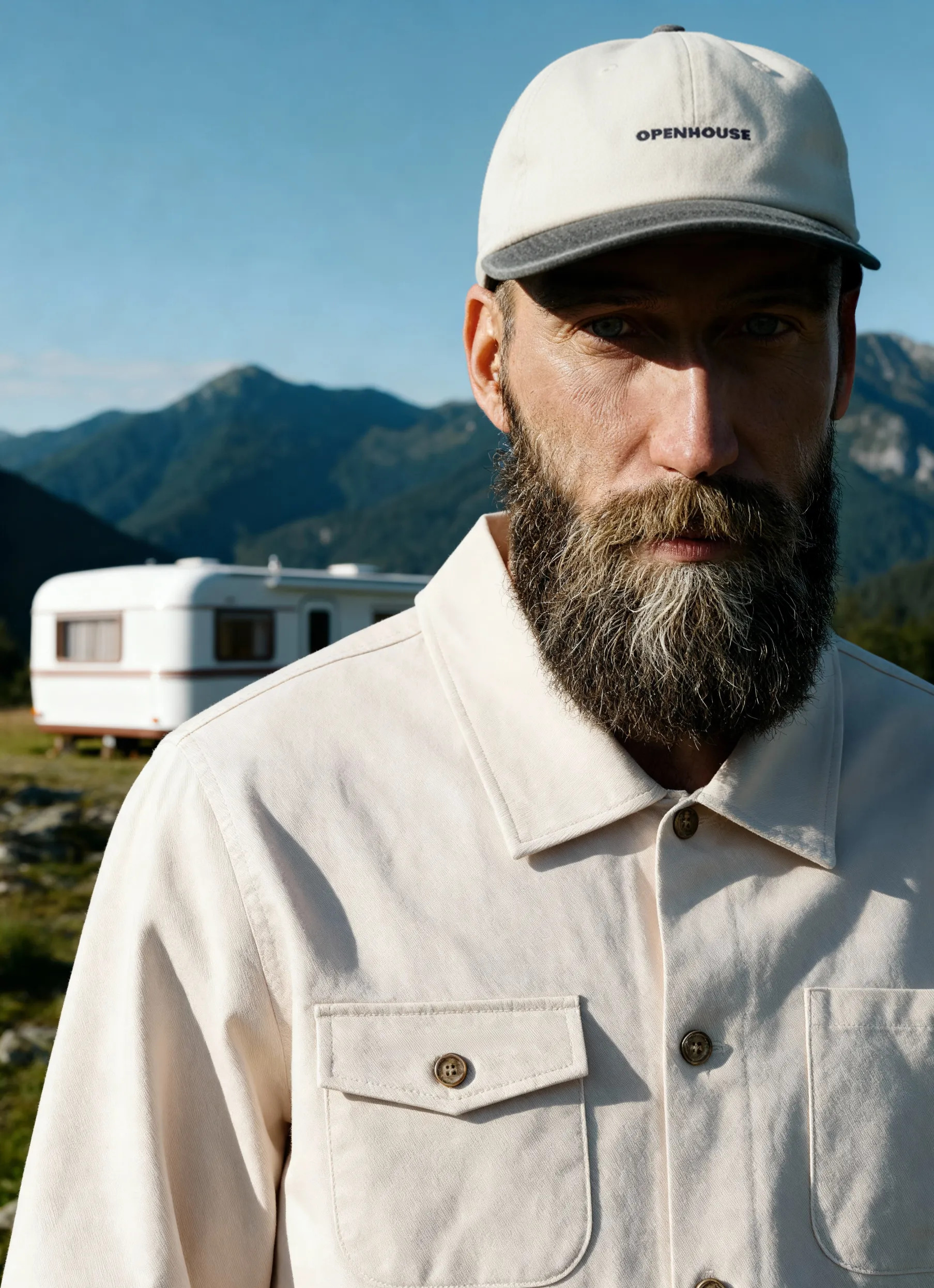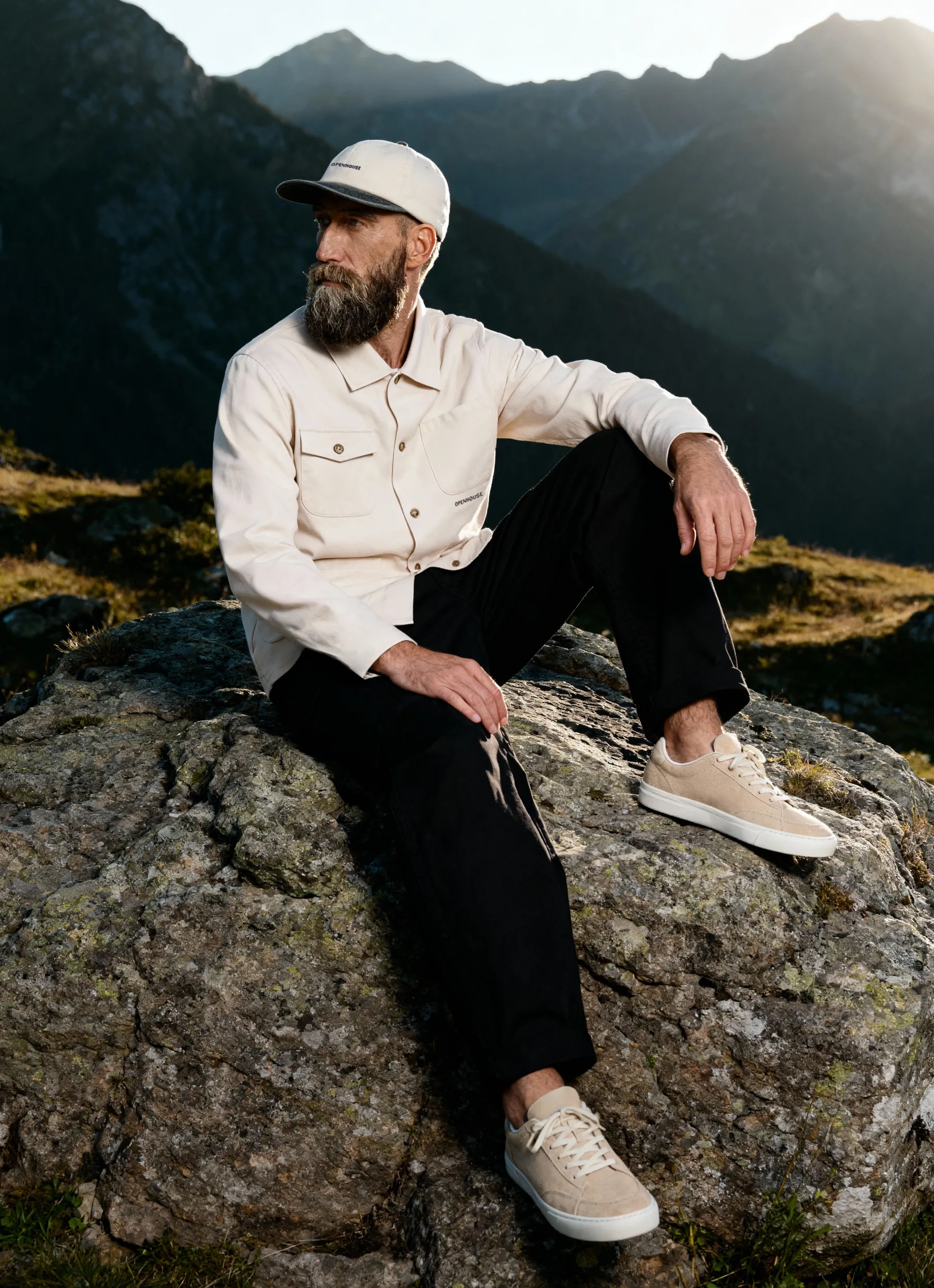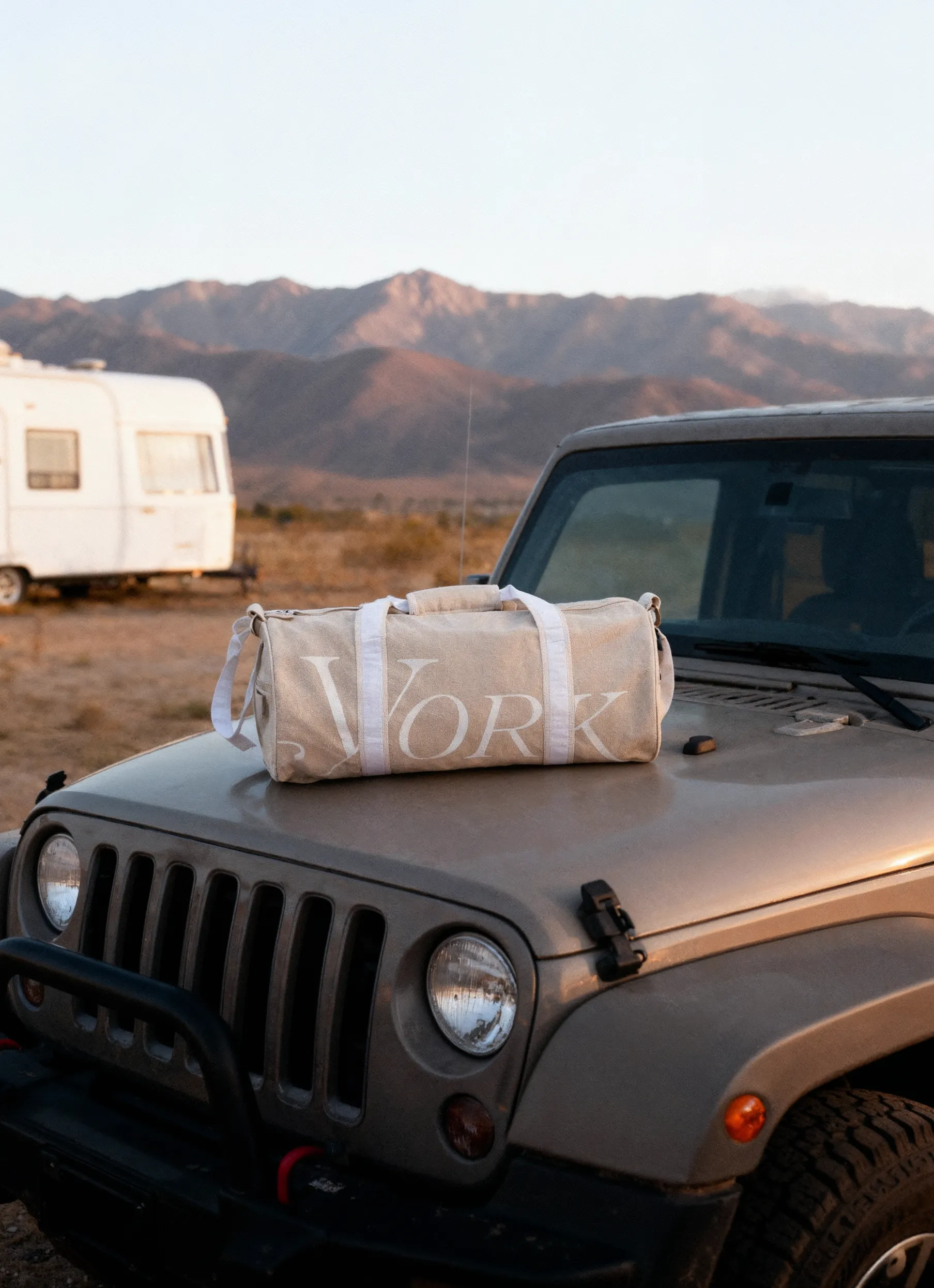A commercial shoot gives your product the visibility and polish it needs to stand out in competitive markets. Whether you're launching a new collection or updating your catalog, high-quality images are key to presenting your brand with clarity and professionalism.
Planning helps reduce guesswork. By defining your goals, shot requirements, and timelines early, you streamline the process and avoid common delays.
This guide outlines the comprehensive end-to-end process for a successful commercial shoot. From setting goals and casting to lighting setups and shot selection, you'll find practical advice to help each step run smoothly.
You'll also learn how to work with production crews, manage brand consistency on set, and prepare your images for multichannel use, from websites to print catalogs.
Whether you're handling your shoot in-house or working with a service like Squareshot, these tips will help you make the most of your session. The ultimate results are photos that make your product stand out.
Planning a Commercial Shoot
To achieve the best results, plan every detail of the shoot. Set clear goals, work within a budget and timeline, and prepare a plan for how the shoot will unfold. This helps you avoid delays and stay on track with your goals and objectives.
Defining Project Goals
Start by deciding what you want to achieve. Are you promoting a new product, building brand awareness, or creating content for ads? Your main goal will guide decisions, from the style of the shoot to the types of shots you need.
Identify your target audience and the message you want to send. Write down key points like the mood, colors, and any special features to highlight. Clear goals help your team stay aligned and deliver images that fit your brand.
Budgeting and Scheduling
Set a realistic budget that covers photography fees, models, locations, props, and post-production. Add a buffer for unexpected expenses. This lets you plan without surprises and helps you choose the right vendor or service.
Create a timeline that covers all phases: preparation, shooting day, editing, and delivery. Factor in shipping times when sending products to a service. Scheduling well avoids rush fees and ensures you get images when you need them.
Script and Storyboard Creation
Create a simple script or shot list that outlines each scene or image you want. This keeps the shoot organized and saves time by knowing exactly what shots come next. Include details like poses, angles, and props.
Use storyboards, sketches, or photos laid out to visualize the flow of the content. This helps everyone on set understand the plan. Clear visual guides reduce confusion and improve the final product.
For professional support and fast delivery, services offer planning tools and transparent pricing to keep your commercial shoot smooth and efficient. Learn more about how to plan a photo shoot for your clothing brand.
Types of Commercial Product Photography Styles
Choosing the right shoot style affects how your product is perceived online or in print. The style you pick should align with your audience, platform, and brand message.
Model-Based, Flat Lay, and Ghost Mannequin Shoots
- Model-Based: Products are worn or used by people. Great for lifestyle branding, fashion lines, and relatable social content. Helps customers imagine themselves using the product.

- Flat Lay: Products are arranged and photographed from above. Best for accessories, skincare, and soft goods. Offers a clean, consistent look with minimal setup.

- Ghost Mannequin: Products are shot on mannequins that are removed in post-production. Useful for showing form and fit without distractions. Common in apparel and catalog photography.

Each style has distinct setup and editing needs. Use a consistent format across your visuals to support a cohesive product experience.
Pre-Production Essentials
Starting a commercial shoot means sorting out key details before the camera rolls. You'll need to select the right talent, secure the perfect location, and build your production team. These factors set the foundation for a successful shoot.
Casting and Talent Selection
Your choice of talent impacts the look and feel of your project. Select models or actors who fit your brand’s style and target audience. Consider their experience, availability, and communication during casting calls or auditions.
Book talent early to avoid scheduling conflicts. If your shoot requires special skills, specify that upfront. Clear contracts about usage rights and payment terms help prevent misunderstandings.
You can work with agencies or handle casting independently. Trusted services offer integrated casting and styling, making this step easier when you want professional models for your product shots or campaigns.
Location Scouting and Permits
Find a location that strikes a balance between style, logistics, and budget. Look for spaces that match your shoot’s mood, whether a studio, outdoor set, or retail environment. Check lighting conditions and power access while scouting.
Once you pick a spot, secure any necessary permits or permissions. This may include insurance, city permits, or private property agreements.
Plan transportation and parking for your crew and equipment. When working with Squareshot, you can also choose from our locations in Brooklyn or Los Angeles to simplify this process.
Assembling the Crew
Your crew handles all aspects of the shoot efficiently. At minimum, hire a photographer, assistant, and lighting technician who know commercial photography workflows. For model shoots or creative campaigns, add a stylist, makeup artist, or art director as needed.
Define each person’s role before shooting day. Provide a detailed schedule and shot list so the team stays coordinated. Use group chats or management software to keep everyone aligned.
Check gear and backup equipment before the shoot. A well-prepared crew reduces risks and helps ensure your product photos meet professional standards.
Executing the Shoot
When your commercial shoot begins, set up the right gear, guide everyone on set, ensure the images align with your brand, and capture all key shots. Each step requires attention to keep the process smooth and get the best results.
Setting Up Lighting and Equipment
Good lighting is the backbone of a professional shoot. Choose lights that highlight your product's details without creating harsh shadows. Use softboxes or diffusers to maintain even and natural-looking light. Position lights at different angles to add depth and texture.
Set your camera for sharp focus and true colors. Tether your camera to a computer so you can see shots immediately and make real-time adjustments.
Check all equipment, cameras, tripods, and reflectors before the shoot. Take test shots early to confirm everything works. This prep reduces surprises and keeps the day on schedule.
Directing On-Set Activities
Communicate clearly when directing on set. Let models, stylists, and crew know exactly what looks and poses you need. Provide concise, specific instructions, such as “angle the jacket slightly left” or “lift the collar gently.”
Stay calm and organized to keep the mood positive. Remind everyone of timing and next moves often.
Use a shot list or storyboard to track what’s been captured. This helps prevent missing essential shots and keeps you focused on your goals.
Ensuring Brand Consistency
Every image should reflect your brand’s style and message. Pay close attention to backgrounds, colors, and props. For example, if your brand is minimalist, avoid cluttered setups.
Check clothing labels, logos, and product colors closely during the shoot. The images must match your brand guidelines. Request approval during or immediately after the shoot whenever possible.
Keep an eye on lighting and editing styles to ensure all photos look unified. Using the same tone and color temperature throughout your shoot strengthens your brand’s identity.
Capturing Key Shots
Identify your must-have photos before the shoot starts. These might include front views, close-ups of details, or lifestyle shots with models.
Capture multiple versions of each key shot from different angles or lighting settings. This variety makes it easier to pick the best final images later.
Shoot with your final use in mind: websites, ads, social media. Different platforms might need different formats or compositions.
For reliable, fast turnaround and professional quality, consider a service that is known for on-time delivery and creative flexibility. More professional tips to plan and execute your shoot can be found in the " How to Plan a Photo Shoot for Your Clothing Brand” guide.
Shot List Examples for Common Product Categories
A predefined shot list helps ensure you capture every essential view. Tailor lists to match your product type and platform needs.
Clothing:
- Front, back, and side views
- On-model and flat lay (optional)
- Detail shots (stitching, labels, textures)
Beauty Products:
- Full product in packaging
- Without packaging (raw container)
- Texture swatches, applicators, ingredient highlights
Accessories:
- Straight-on and angled shots
- Close-ups of clasps or hardware
- Styled flat lay or lifestyle setups
Plan your shot list with editing and usage in mind. Cropping and aspect ratios vary between ads, product pages, and social content.
Post-production and Final Touches
After the shoot, your images go through careful adjustments to look their best. This includes fixing colors, removing flaws, and adding needed design elements. You’ll also review the final photos to make sure they match your vision before delivery.
Editing and Color Grading
Editing sharpens your images by correcting exposure, removing dust or scratches, and improving clarity. Color grading makes sure the hues are true to life or styled to fit your brand. Adjusting the white balance keeps product colors accurate, which is key for e-commerce.
Good lighting during the shoot reduces the editing required, saving time and cost. Still, professional retouching is important to polish details like reflections or textures. Work with a service that offers this step included in all packages. This way, you ensure your photos are catalog-ready and consistent.
Adding Graphics and Effects
Sometimes, product images require additional elements, such as logos, text, or shadows. These graphics help highlight features or create a branded look for ads and websites. Effects can also add depth or soften edges for a natural feel.
You can request specific edits, but complex changes might add extra time or cost. Plan all graphic needs before the shoot to avoid surprises. Clear communication with your photography provider ensures the final images look exactly how you want.
Reviewing and Client Approval
Before delivery, review the edited images through a client portal or direct link. Request small fixes or confirm that everything matches your brief. Timely feedback helps keep your project on schedule.
Approving the photos starts the final production and delivery process. Some product photography services limit major revisions to keep turnaround times fast. Squareshot’s system offers easy revision requests so you stay in control without delays. Quick approval ensures you receive high-quality images on time.
How to Choose the Right Photography Service
Selecting a professional service impacts the quality and speed of your final images. Look beyond price: evaluate expertise, turnaround times, and communication.
What to Look for in Photography Services
- Portfolio Relevance. Look for examples that match your product type or industry.
- Turnaround Time. Check average delivery windows and revision speed.
- Pricing Structure. Fixed per-image pricing helps control costs.
- Remote Access. Useful if your team can't attend the shoot.
- Post-Production Included. Ask about the standard level of editing.
Some services combine per-image pricing with catalog-ready edits, saving you time and reducing revision cycles.
Optimizing Commercial Shoot Outcomes
A well-executed commercial shoot relies on thorough preparation, effective team alignment, and precision during execution. The key to consistent results is clarity on goals, roles, and visual direction.
Start by locking in your product story: what you’re showcasing, who it’s for, and how it needs to look. Use storyboards and shot lists to keep every team member on track.
Lighting should highlight product details without introducing glare or shadow artifacts. Keep your background, props, and styling aligned with brand tone — whether minimal, editorial, or lifestyle. Direct your team with specificity, not improvisation. Guide models, stylists, and assistants toward the intended result. Tethered shooting allows you to review and adjust instantly, reducing the need for reshoots.
After capturing your must-have images, post-production fine-tunes sharpness, color accuracy, and background cleanliness. A streamlined feedback and approval loop enables fast delivery without sacrificing quality.
Commercial shoots work best when every decision supports the final use case. Treat each frame as a building block in your product's digital shelf presence.
Frequently Asked Questions
When preparing for a commercial shoot, knowing how to start, what gear to use, and typical workdays helps you plan better. Understanding common shoot types and pricing also helps you set realistic expectations.
How do I get started in commercial photography?
Build a strong portfolio with varied product shots. Learn lighting and composition basics to make your images stand out. Connect with trusted services to get real-world experience and access to professionals.
What are some common types of commercial photo shoots?
Product photography for catalogs and online stores is common. Editorial shoots support brand launches or magazine spreads. Model product photos and beauty product photography are other key types with specific styling and retouching needs.
Could you suggest some essential equipment for commercial shoots?
A DSLR or mirrorless camera with good resolution is crucial. Lighting kits with softboxes or ring lights help control shadows and highlights. A sturdy tripod ensures sharp shots. Accessories like reflectors and backdrops improve shoot flexibility.
What are the average rates for a commercial photography job?
Rates vary by shoot type and complexity. Per-image pricing often starts around $50 for clothing shots. Hourly rates for catalog or model shoots can range from $750 for a quarter-day to nearly $3,000 for a full day. Membership plans provide better rates for recurring needs.
How can I find commercial shoot opportunities?
Reach out to brands requiring product photos or catalog updates. Online marketplaces and photography services connect you with clients. Networking with marketing professionals and agencies also helps you discover more jobs.
What does a typical day look like for a commercial photographer?
You start by setting up lighting and gear. Next, you shoot different product angles or model poses and manage your time efficiently. Afterward, you retouch and edit images to ensure quality before the client approves them. You also communicate with clients and make quick revisions as needed.
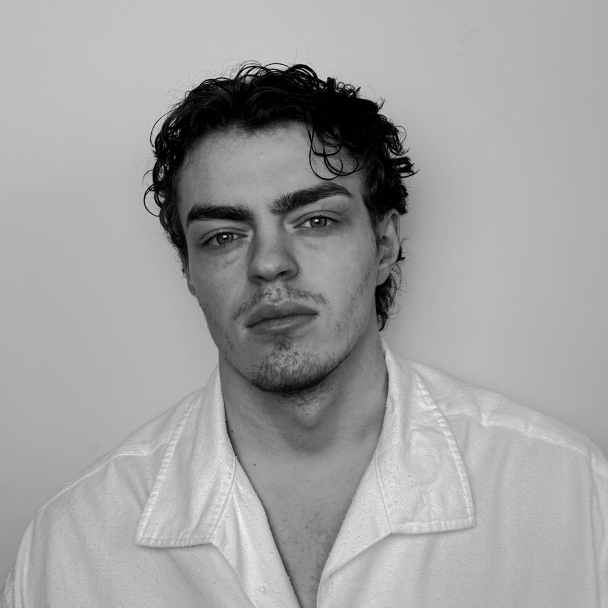
Product A
SQUARE SHOT



